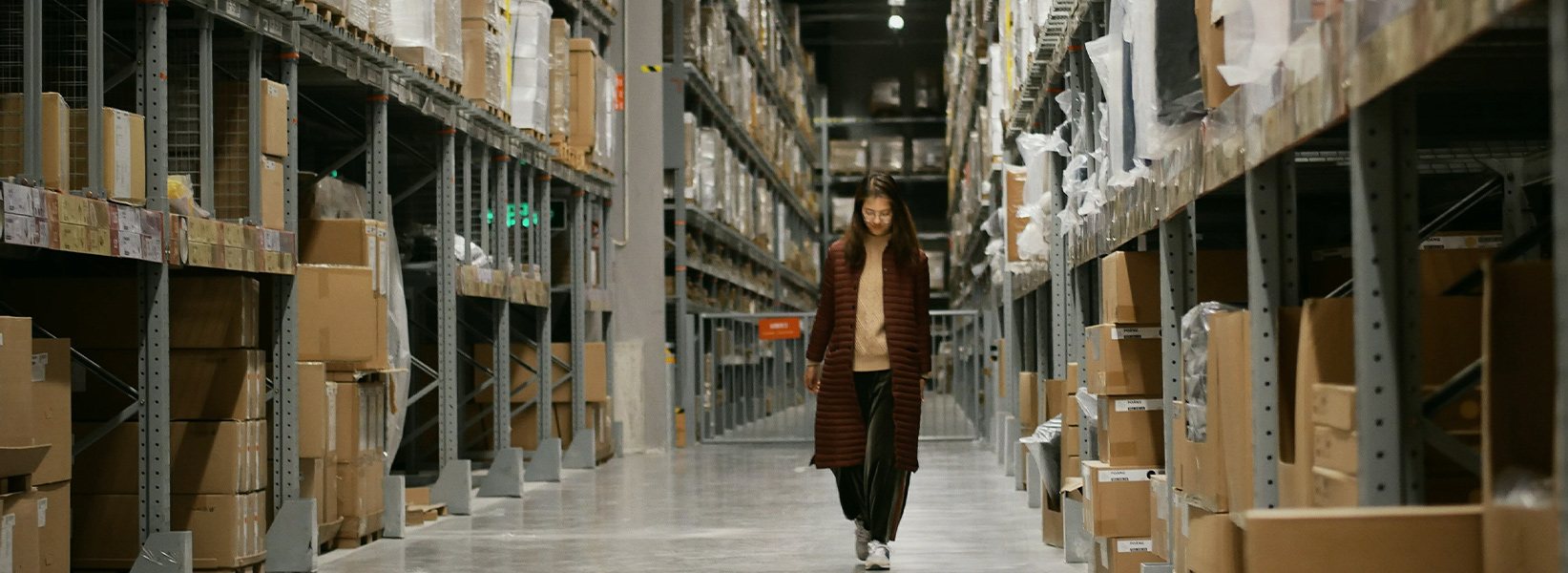B2B CX: TALES FROM THE CRYPT AND THE NARRATIVE OF SUCCESS

2021
So, let’s talk about B2B... Business-to-Business... but if you think of it, the communication happens among humans. Therefore, let’s see how our customers, as human beings, will impact the way we strategise and make decisions for the B2Bs.

Integrate Customer Empathy into the process
Organisations tend to have a blind self.
I don’t know if you have ever heard of the Johari Window. It’s a technique that helps people better understand their relationship with themselves and others, which ultimately creates another level of self-awareness. One of the 4 windows portrays our blind self. Something that is known to others, but not to ourselves. Well, the same thing actually happens to organisations. They tend to have a blind self.
Acknowledge the fact that you don’t know what your customers want
“I know what my customers want”: this is a common statement made by stakeholders. Something that we bump into in almost every conversation we have with our clients - mainly in the early stages of our collaboration. It also happens in B2C, but in B2B it’s even more noticeable, due to the nature of the relationship between B2B buyers and their supplier (via Account Managers).
A few years ago, a commuter asked Twitter users which one is their preferred seat (giving a number from 1-6), assuming that they will all pick the one he had in mind and made more sense to him. Twitter went bananas, because everyone had in fact very different opinions based on their demographics, needs, context and journey. They tweeted their preferred number (or numbers) and the rationale behind their selection. And there were cases where commuters gave an answer that was not one of the 6 options given, based on their own reality and needs. Mr. Bloomberg, for example, replied that he prefers to be a standing passenger, so none of the options given worked for him.
You should first acknowledge that you are not your customer.
So, firstly, you should acknowledge the fact that, in most cases, you don’t know what your customers want. Why? There are several reasons. I will go through some of them in the next few lines.
You are not the customer! Sometimes we tend to assume we know what our customers want, based on the belief that our customers have the same needs as us, since we are also customers. It’s called the false-consensus effect.

Understand Customers’ Complexity in B2B
Meeting customers regularly is one thing, but understanding their behaviours and anticipating their needs takes more than building trust.
It definitely helps when you meet customers regularly, but only if you are conducting a methodically planned customer research. Perhaps you have never conducted one, but even if you have, your findings may be invalid.
This derives either from interdepartmental silos and data fragmentation happening within the organisation or from the fact that you miss something fundamental when it comes to B2B. It is not solely about the customer as an individual (the one that you most probably acquaint with regularly via your Salespersons or Account Managers), but also about the internal interactions with other personas within the organisation, who influence the decision making; and it is also about the actual context and their everyday reality.
Find the right sample of your Customers and build rapport
An important question that you should answer is “Am I talking to the right customers”? Because sometimes we don’t, and this is happening because we tend to create relationships with the extroverts or the ones we have already built a strong relationship with. Or, perhaps, we specifically interact only with the decision-maker persona, within a larger organisation with multiple influencers and stakeholders that impact customer’s decision making.
This way, we get a distorted snapshot of customers, by oversimplifying the complexity of their ecosystem and, ultimately, misinterpreting needs, behaviours, pain points and opportunities along their journey.
Make sure you have the right person for conducting Customer Research
Another causation derives from the fact that B2B organisations focus on building long-lasting relationships with customers. One of their assets are the Salespersons or the Account Managers, who visit client’s premises and build rapport and trust on a regular basis.
The key here is to understand that Sales Representatives interact with customers in a completely different context; they build a different relationship than the one, for example, a researcher would seek. Salespersons apologise when they hear about a bad customer experience, they argue in favour of the customers, they promise things and give solutions. But they don’t empathise with them, they don’t ask why, they don’t get the chance to observe customers in their environment, in order to find the root cause of a problem mentioned.
Avoid thinking your Customers as Market Segments, Roles or Stereotypes
Lastly - and this applies to companies that have already made some steps towards the CX Maturity scale - some B2B organisations think of their customers and analyse them the wrong way. Your customers are not market segments (a Hotel or a Restaurant does not have needs and pain points). You should not think of your customers as roles within their organisation (like a Restaurant Manager or a Chef) because this prevents you from empathising with them. And, of course, you should not trick yourselves into thinking of stereotypes.
So, where’s the empathy in this segmentation?

Leverage Field Studies and triangulate Research findings
The key to customer empathy is to understand the WHY behind the WHAT. You should leverage field studies, in order to give your metrics context; to give them meaning. Prefer to witness what your customers are actually doing in their own context, instead of asking them what they want or what they think they will do in a given situation. So, if you have the chance, spend a whole day with them to take a wider view, by observing everything that customers or prospects do, whether that involves your company or not. Because this observation, highlights existing pain points in peoples’ lives, and gives us the chance to drive innovation through addressing unmet needs.
Your product offering is as strong as your research findings.
It is important to remember that your product offering is as strong as your research findings. You should, first and foremost, make sure that you are offering your customers the right experience and, in order to do that, you must first make sure you understand their needs, their context, their reality.
Of course, understanding B2B customers is way more complex than in B2C. The buying process is longer, sometimes very bureaucratic and with many internal workflows among decision makers. Multiple stakeholders are involved in different stages of the purchase funnel, from search to the actual use of the product. Not to mention the establishment of a more complex value system - dependable, collaborative and, sometimes, even conflicting.
Map your Customers based on Behaviours
In B2B, we frequently see clients mapping out the companies they serve as customer profiles. That’s wrong. When you sell to a company, you sell to people. Those people can be classified into different customer profiles or buyer personas based on common behavioural patterns, when involved in buying or using your products and services.
So, let’s assume you are a Food & Grocery B2B, selling goods to various business (Hotels, Restaurants, you name it) and one of your clients is a Hotel. Within the Hotel, there are different roles (Procurement Manager, Chef, etc), but neither of them help you empathise with them. What we need to do, is to map out their behaviours. Therefore, you may find the Key Decision Maker persona, the Decision Influencer and the Saboteurs, to name a few, all of which play a different role in the final decision making.
You should also not forget the importance of analysing, at the same time, the Employee personas of your Food & Grocery B2B, in order to understand and empathise with their reality too, but also to witness and decode their interaction with your customer personas.
See the Forest and the Tree at the same time
It is really important to have your customer personas in place, but it is also critical to include them in a matrix, to understand the greater picture of your customers. So, you have the Maximiser, a person who strives to make a choice that will generate the maximum benefit later on or the Satisficer, whose choices are determined by more modest criteria and nothing more. At the same time though, the bird’s eye view will help you understand the bigger picture, link customer personas with client attributes (like for example client size or static vs dynamic) and focus on what gives you value.
What you need to do, then, is to make research a team sport. Company culture should transform towards a more collaborative work model with no silos. Triangulate customer insights to ensure validity on a regular basis, and both micro and macro-analyse, in order to see the forest and the trees at the same time, depending on whether you strategise or you analyse findings.

Map your Service Offering
Integrating customer empathy and utilising customer research into the process is a game changer towards making sure you are actually designing the right experiences for your customers. However, to design the right experiences, you should focus on the actual service you provide as well. And, in order to do that, you should follow personas throughout their journey, mapping everything as you go.
B2B buying is a continuous and dynamic process.
Inside-out and Outside-in
When you start mapping, it always helps to change perspectives by mapping inside-out and outside-in. You should map your business flows and their impact to your customers persona and journey and, at the same time, map your customer’s journey along with all the things that are happening backstage (as in paper artefacts, back-end systems, policies, back-office employees). So, you analyse the same scenario from a different point of view, mining micro-moments and exploring correlations that may have otherwise been missed.
There are multiple interactions within your clients’ organisations that may affect the attitudes and satisfaction levels of customer personas (on a, let’s say, personal level), but also affect the overall experience on a collective level. Some interactions are conflicting; multiple interactions with members of the team may be needed to reach a decision; some personas might need to revert to the key decision-maker persona, which is in the spotlight with new requests; the interaction with a given persona may affect the economic parameters of the final decision, and so on.
So, you have many feedback loops and interactions across your client`s business.
You should also map interactions with your B2B organisation’s employees. There are different dipoles of employee-customer interactions, sometimes even happening in parallel streams.

Cater for Omni-channel Complexity
Digital and offline channels intersect each other more regularly in B2B - at least when it comes to B2B eCommerce and actual brick & mortar shops. Imagine that you are a B2B supermarket and your client is a restaurant. The restaurant’s chef will surely be found navigating through the corridors of your physical store to check the quality of fresh products, while adding them via the mobile app into a job list. At the same time, the restaurant’s manager will most probably be approving an order that was already submitted through a workflow.
In longer journeys, customers are trying to accomplish different things, at different times, and in different ways. Consequently, you may need to break down the journey, due to mapping and analysing complexity. Some flows are much more complex and need separate representation and study, as for an example the infamous Registration flow, due to bureaucracy, legacy systems involved, poor bridge with government APIs, complexity on personas, roles, rights and workflows.
Collective Mapping on the Client level
It is also valuable to map and study a journey on the client level, given a specific persona-focused scenario, and evaluate experience company-wide. This will offer you the greater picture and the overall satisfaction. Simply put then, when starting out to map a journey, you should map not only the feelings and attitudes of your primary persona, but of all stakeholders as well. This collective mapping is sometimes really insightful.
Factor in metrics & KPIs that relate to Economic, Business & Customer Value
The B2B service provision should achieve the golden ratio between customer expectations and customer satisfaction (not over- nor under-perform) due to the long-term nature of the B2B relationship. Economic value is maximised when customer expectations and experiences are in alignment. This is also something you need to map accordingly throughout the persona’s journey.
When discussing economic value, you should factor in all relevant metrics and KPIs, to add explanatory power and context to your journey maps - especially when it’s time for critical prioritisation or decision making. Metrics can occur from your CRM, operational data (such as error rates or the numbers of support calls), GA, key CX metrics like NPS score or even metrics from your physical store.
At ATCOM we design and implement in-store technologies and interactive installations, incorporating also smart analytics, in order to collect customer behaviour data, even from the physical store.
Understand Customers’ impact to your Business
Create value for your customers.
A good mapping endeavour produces comprehension that influences strategy and tactics. It may affect the Leadership model, Budget allocation, Tools, Services, Internal Communications or even Physical Spaces (building a dark store, a new hub or a storage facility, for instance).
It is the golden pass to better organisational planning; it helps surface and prioritise evidence-based initiatives and provides guiding principles for the next steps.
And it is very important to remember that, even though it is undoubtedly a catalyst, it's not a conclusion. The critical success factor is to make it an iterative process.
Start the Mapping Endeavour ASAP
Customer Experience (CX) is a strategic consideration. Put the customer in the centre of your decisions - not the client, not the user - and follow a customer-centric Business Strategy. You may be selling Business-to-Business, but you absolutely need to start communicating Human-to-Human.

- Empathise and collaborate with your customers.
Connecting empathetically with buyers’ expectations and emotions must be a core element of your messaging platform and inform every customer experience.
“What B2B Buyers Crave”, Forrester Research, May 2020
- Leverage all data and create a collective customer knowledge! There is an enormous amount of data available. You can now handle Big Data, analyse them and get insights on your customers’ actions, behaviours and needs.
- Embrace customer journeys' complexity. Don’t oversimplify! Map carefully, systematically and holistically. And remember… the key success factor is to make it an iterative process.
- Provide a personalised experience. Build across a wide array of contexts; the B2B customer is not a single persona. You should think Omni-channel, be proactive, consistent and relevant.
- Give value to your customers’ businesses. It is a partnership, after all. Invest in them. Give them the tools they need to thrive.
- Please, do avoid copying B2C experiences.
- Don’t wait for research findings to find you. Instead, participate in the process, break down the silos!
And don’t do it alone... help is on the way!
See Alicia's presentation in "CX Summit 2021: From Customer Xperience to Company Xcellence", held in Athens on January 21st, here!
